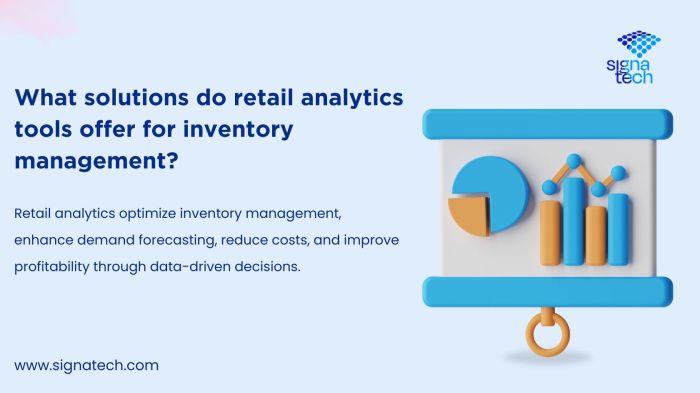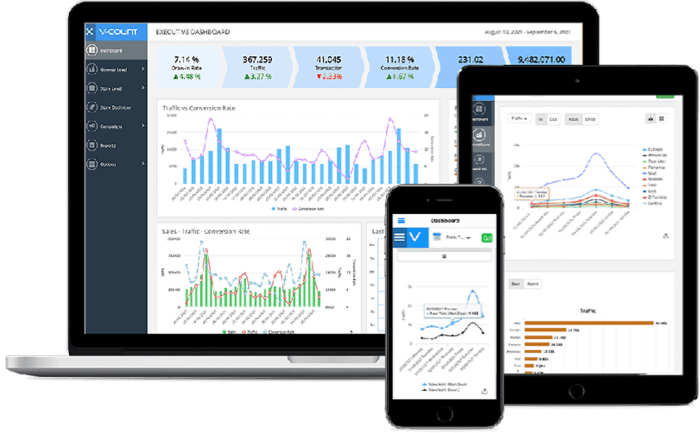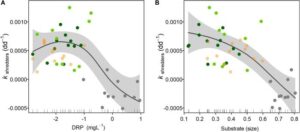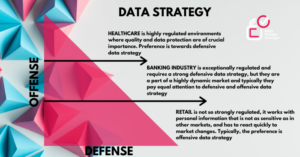
In-store analytics tools are revolutionizing the way retailers understand and respond to consumer behavior. As we step into a world driven by data, these tools provide invaluable insights that not only enhance operational efficiency but also elevate the overall shopping experience.
By leveraging the power of analytics, retailers can optimize their inventory management, improve customer engagement, and tailor marketing strategies to meet the unique needs of their clientele. With a range of tools available, from foot traffic analysis to customer sentiment tracking, the potential for innovation within the retail space is limitless.
Importance of In-store Analytics Tools
In the rapidly changing landscape of retail, in-store analytics tools have emerged as crucial instruments for success. These tools enable retailers to harness data effectively, driving business innovation and improving decision-making processes. By understanding customer behavior and sales patterns, retailers can adapt their strategies to meet evolving consumer needs.The significance of in-store analytics tools cannot be overstated. They empower retailers to optimize inventory management, enhance customer experiences, and streamline operations.
For instance, in the restaurant industry, a well-known chain implemented in-store analytics to monitor foot traffic and customer preferences. By analyzing this data, they adjusted their menu offerings and promotional strategies, resulting in a significant increase in customer satisfaction and sales.
Types of In-store Analytics Tools
Various types of in-store analytics tools are available in the market today, each catering to different aspects of retail management. Understanding these tools can help businesses choose the right solutions for their specific needs.
- Foot Traffic Counters: These devices track the number of customers entering and exiting a store, providing insights into peak hours and customer flow patterns.
- Customer Engagement Tools: These tools utilize sensors and mobile applications to gauge customer interactions with products, enhancing personalized marketing efforts.
- Point of Sale (POS) Analytics: Advanced POS systems gather sales data, allowing retailers to analyze transaction histories and optimize inventory levels accordingly.
- Heat Mapping Software: This technology visualizes customer movement within the store, helping retailers identify popular areas and optimizing store layouts.
The shift from traditional analytics methods to modern in-store technologies has significantly improved the accuracy and relevance of retail analytics. Traditional methods often relied on manual data collection and simple metrics, whereas contemporary tools provide real-time insights and comprehensive data analysis.
Impact on Retail Marketing Strategies
In-store analytics tools play a pivotal role in enhancing marketing strategies within the retail sector. By leveraging data-driven decision-making, retailers can refine their marketing efforts, ensuring they reach the right audience at the right time.Data gathered from in-store analytics allows businesses to tailor their marketing campaigns, leading to increased engagement and higher conversion rates. For instance, a successful case study involves a retail brand that utilized customer purchase behavior data to create targeted promotions.
This approach not only boosted sales but also improved customer loyalty, as consumers appreciated the personalized offers.
Role in Business Productivity
In-store analytics tools can significantly improve overall business productivity by streamlining operations and enhancing decision-making processes. These tools provide retailers with actionable insights that can be integrated into daily operations, leading to better resource management.Integrating in-store analytics into small businesses can be achieved through straightforward methods. For example, small retailers can utilize affordable traffic counting systems to determine peak shopping hours, allowing them to allocate staff more efficiently.Key performance indicators (KPIs) that can be monitored using in-store analytics include:
- Sales per square foot
- Customer dwell time
- Conversion rates
- Inventory turnover
By focusing on these KPIs, businesses can make informed decisions that enhance productivity and profitability.
Enhancing Customer Experience
Utilizing in-store analytics tools effectively can lead to significant enhancements in customer experiences. By understanding customer behavior through data collection, retailers can create more personalized shopping experiences that resonate with their clientele.Strategies for utilizing these tools include:
- Implementing loyalty programs that reward repeat customers based on purchasing patterns.
- Using customer feedback collected through analytics to continuously improve service offerings.
- Personalizing marketing messages and promotions based on individual preferences.
Personalized services driven by analytics not only increase customer satisfaction but can also lead to higher sales as customers feel more valued and understood.
Risk Management with In-store Analytics
In-store analytics tools are also essential for identifying potential risks within retail operations. By closely monitoring data, retailers can detect anomalies and trends that may indicate risks, allowing them to implement proactive measures.Mitigating risks through data-informed strategies involves:
- Conducting regular audits of inventory data to prevent stockouts or overstock situations.
- Analyzing sales trends to anticipate seasonal fluctuations and adjust marketing strategies accordingly.
- Utilizing customer feedback to address service issues before they escalate.
For instance, a fashion retailer might notice a decline in sales for a specific product line. By analyzing customer data and feedback, they can identify the underlying issue—such as poor design or pricing—and make necessary adjustments to mitigate potential losses.
Training and Development

A comprehensive training program for employees on how to effectively use in-store analytics tools is vital for maximizing their potential. Continuous education in sales management regarding new technologies ensures that teams remain competitive and adept at using data to drive success.Training sessions should focus on:
- Understanding the functionality of each analytics tool and its applications.
- Interpreting data insights to make informed decisions.
- Fostering a culture of data literacy within the retail team.
Encouraging employees to embrace analytics fosters an environment of innovation and efficiency, ultimately leading to improved business outcomes.
Future Trends in In-store Analytics
Emerging trends in in-store analytics are reshaping the retail landscape. Innovations such as artificial intelligence and machine learning are enhancing traditional retail analytics, providing deeper insights and predictive capabilities.Comparing traditional retail analytics with new technologies reveals a shift towards real-time, automated data analysis, which allows retailers to respond swiftly to market changes. However, challenges such as data privacy concerns and the need for employee training in new technologies persist.Retailers can navigate these challenges by implementing robust data governance policies and investing in ongoing training for their teams, ensuring they remain equipped to leverage the latest analytics tools.
Networking and Collaboration
Networking with professionals in the retail industry provides invaluable insights into the best practices for using analytics tools. Collaborative efforts can lead to shared knowledge and strategies that enhance retail performance.Effective communication within teams is essential when implementing new technologies. Strategies for improving communication include:
- Establishing clear objectives and expectations for analytics projects.
- Encouraging regular feedback sessions to discuss progress and challenges.
- Utilizing collaborative platforms to share data insights and findings.
Organizing roundtable discussions about best practices in analytics usage can foster a community of learning, allowing retailers to benefit from collective experiences and insights.
Case Studies and Business Interviews
Researching case studies of businesses that have successfully implemented in-store analytics tools reveals practical insights and strategies that can be applied across the industry. Interviews with business leaders who have utilized these tools can provide first-hand accounts of their impact on success.Key interview questions may include:
- What challenges did you face during the implementation of analytics tools?
- How have analytics changed your approach to customer engagement?
- What future trends do you anticipate in the field of in-store analytics?
Insights gained from these interviews can inform best practices and guide other retailers in their analytics journeys.
Ending Remarks

In conclusion, the impact of in-store analytics tools on the retail sector is profound, shaping the future of shopping experiences and business operations. As retailers continue to embrace these tools, they will not only enhance their productivity but also forge deeper connections with their customers, ensuring long-term success in an ever-evolving marketplace.
Answers to Common Questions
What are in-store analytics tools?
In-store analytics tools are technologies that help retailers gather and analyze data about customer behavior, traffic patterns, and sales performance within physical stores.
How can small businesses benefit from in-store analytics?
Small businesses can utilize in-store analytics to better understand their customers, optimize inventory, and improve marketing tactics, ultimately leading to increased sales and customer satisfaction.
Are in-store analytics tools expensive to implement?
The cost of implementing in-store analytics tools can vary widely, but many options are available for different budgets, making it accessible even for smaller retailers.
How do in-store analytics tools enhance customer experience?
These tools enable retailers to personalize services based on data insights, thereby improving customer satisfaction and fostering loyalty through tailored experiences.
What trends should we watch for in in-store analytics?
Emerging trends include the integration of artificial intelligence, machine learning, and mobile analytics, which will enhance real-time decision-making and customer engagement.





